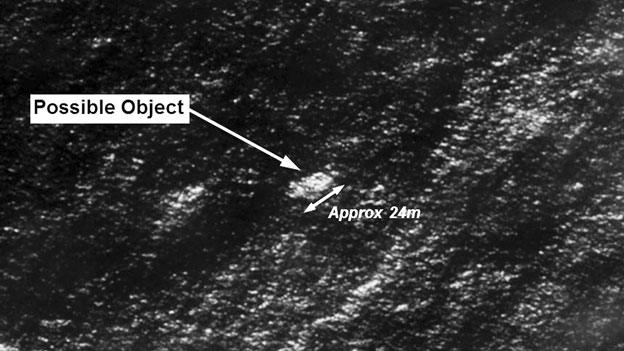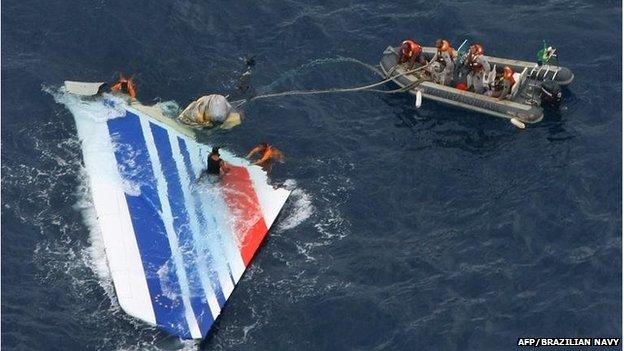Missing MH370: World's most difficult recovery
- Published

The search for the missing Malaysia Airlines plane is now focussed on the south Indian Ocean.
Ships and planes are hunting for two large objects spotted in satellite images that could be floating debris.
But if these are located and confirmed as wreckage from flight MH370 - and that is still a big if - one of the most complex recovery operations ever undertaken could lie ahead.
The first stage would be to carefully examine any fragments of the craft found. Their condition, for example whether they show any signs of an explosion, could begin to shed light on what happened to the plane.
Importantly, they could also help to narrow down the location of the crash, and the possible site of the plane's "black box" flight recorders.
But David Mearns, director of Blue Water Recoveries Ltd, says because of the amount of time that has passed since the flight vanished on 8 March, this would not be easy.
"If the debris is confirmed, the positions and times that any pieces are found will be clues that will have to be used to determine where the plane actually impacted," he explains.
"But in this instance, we are talking many days after the plane would have crashed - that debris will have floated for a very large distance - and potentially an uncertain distance. If we don't know what the winds and currents were doing at that time, it makes the search box enormous."

If the objects in the satellite images do belong to the plane, they could help scientists to find the crash site
He believes the best hope of finding an impact site is to concentrate efforts on detecting the acoustic signals that are being emitted from the black box recorders.
"These pingers have a definite life - generally 30 days - but sometimes less, sometimes more. That gives a window for teams to get the best possible pinpointing of the wreckage.
"If they can get their equipment in as soon as possible, and listen and try to pick up those black boxes - that is the best possible chance of finding this plane."
After the signals stop, finding a missing plane at sea becomes far more difficult, as illustrated by the hunt for the Air France flight 447, which crashed into the Atlantic in 2009.
David Gallo from the Woods Hole Oceanographic Institution in the US was involved in that search.
"Unlike this flight, we had a very good last-known position that allowed the authorities to direct the search team. But it took five days to locate the first bits of wreckage, and the black box was never heard," he told BBC News.
It wasn't until 2011, after an area with a 75km (40 nautical mile) radius had been examined using sonar, that the wreckage of flight 447 was discovered and recovered using both autonomous and remotely operated underwater robots (AUVs and ROVs).

Air France Flight 447 was the biggest recovery of its kind, but finding Flight MH370 could be even more complex
"With the [Malaysian Airlines flight], if any debris is found, the process of backtracking the pieces will reduce the search area quite a bit, but it will still be a vast area," Dr Gallo says.
Dr Simon Boxall, an oceanographer from the University of Southampton, agrees: "With Air France, the flight path was known, and finding the plane still took two years. Here, we have no idea of its flight path and we will be looking over a very broad area."
Once the acoustic signals from the flight recorders stop, investigators will have to use ships equipped with sonar to map the sea floor and search for the wreckage there.
However, the site is remote - the search area is 2,500km (1,550 miles) from Perth in Australia - and the conditions in this part of the ocean are tough.
"These are some of the roughest seas in the world. There are big storms, huge waves and strong winds - for many parts of the year it is simply inoperable," he explains.
Nevertheless, the geology of the underwater region makes this slightly easier, says Dr Gallo.
Where the Air France flight 447 wreckage sank onto a seabed containing underwater mountains and ravines. The ocean floor in the MH370 search area seems flatter, he says.
"It's a volcanic terrain, which is a much more benign environment than for Air France."
And while the seabed is deep, reaching about 4,000m down, David Mearns says recovery would still be possible, although more complex and expensive.
"We have a saying in our industry: almost anything can be found as long as you spend enough money. Air France was in the order of £20-25m. With this, you could add another zero on."
Follow Rebecca on Twitter, external
